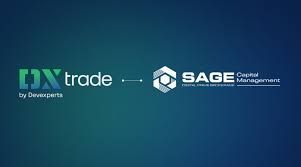Blockchain Development: Unlocking the Future of Business and Technology
Blockchain development is revolutionizing industries by enabling secure, transparent, and immutable data sharing. Whether for cryptocurrencies or enterprise applications, blockchain technology offers robust solutions that ensure data integrity, streamline processes, and enhance automation. The growing adoption of blockchain across various sectors is a testament to its transformative potential. In this article, we’ll explore what blockchain development is, the key steps involved in building blockchain solutions, and how organizations can leverage this technology to drive innovation.
What is Blockchain Development?
Blockchain development refers to the creation and deployment of software applications that run on a blockchain platform. These platforms use distributed ledgers to ensure that data is immutable (cannot be altered) and fully traceable. This feature makes blockchain particularly useful for businesses that need a high level of data integrity and security.
Blockchain solutions are being used to streamline workflows, reduce fraud, improve transparency, and facilitate faster, cheaper transactions across multiple industries, including finance, healthcare, supply chain management, and more.
Key Steps in Blockchain Development
Developing a blockchain solution is a multifaceted process that requires careful planning, technical expertise, and collaboration across several project roles. Here’s a high-level overview of the main stages in blockchain development:
1. Feasibility Study
The first step in any blockchain development project is conducting a feasibility study. This involves assessing the business problem and determining whether blockchain technology is a viable solution. Blockchain is not a one-size-fits-all solution, and it’s essential to ensure that the potential benefits outweigh the costs.
During this phase, key questions are addressed, such as:
- Does the business involve cross-company workflows that require automated accountability?
- Does it handle sensitive data that needs to be shared securely among multiple parties?
- Is there a need to eliminate third-party intermediaries for greater efficiency?
Based on the answers to these questions, a detailed feasibility report is created, outlining the potential return on investment (ROI) and identifying risks.
2. Blockchain Conceptualization
Once the feasibility of the blockchain solution is confirmed, the next step is to conceptualize the blockchain’s architecture and design. Key decisions include:
- Blockchain Type: There are three main types of blockchains—public, private (permissioned), and hybrid. The choice depends on business needs, data privacy requirements, and scalability concerns.
- Consensus Mechanism: Blockchain uses consensus mechanisms to validate transactions and maintain the integrity of the network. Popular mechanisms include Proof of Work (PoW), Proof of Stake (PoS), and Byzantine Fault Tolerance (BFT). The consensus mechanism determines how new blocks are validated and added to the chain.
- Blockchain Platform: The next decision is whether to build the blockchain from scratch or fork an existing open-source blockchain platform. For example, platforms like Ethereum, Hyperledger, and Binance Smart Chain are commonly used for building decentralized applications (dApps) and blockchain-based solutions.
3. Blockchain Development and Quality Assurance
The core of the blockchain development process involves coding the solution based on the finalized design. This step typically includes:
- Smart Contract Development: Smart contracts are self-executing contracts where the terms of the agreement are directly written into code. These contracts automatically execute and enforce agreements when predefined conditions are met, reducing the need for intermediaries.
- dApp Development: Decentralized applications (dApps) run on blockchain networks and provide users with functionalities like peer-to-peer transactions, decentralized finance (DeFi), or tokenization of assets.
- Backend Development: Blockchain solutions require a solid backend architecture to store and process data, and ensure smooth interaction with the blockchain network.
Simultaneously, quality assurance (QA) is performed to detect bugs, vulnerabilities, and logic errors before the solution is deployed. Rigorous testing on a test network is essential to ensure the blockchain performs as expected in real-world scenarios.
4. Deployment and Integration
After successful testing, the blockchain solution is deployed on the live network. This stage involves integrating the blockchain with existing enterprise systems and ensuring that it works seamlessly with other business applications. This is followed by the final launch, where the blockchain solution is made available to end-users.
Types of Blockchain Solutions
Blockchain can be used across a wide variety of applications. Some of the most popular use cases include:
1. Blockchain for Payments and Financial Services
Blockchain has the potential to revolutionize payments by reducing transaction fees, increasing speed, and eliminating intermediaries. It is particularly useful for cross-border payments, where traditional systems are often slow and expensive.
Blockchain solutions for financial services include:
- Cryptocurrencies: Digital currencies like Bitcoin, Ethereum, and other altcoins.
- Decentralized Finance (DeFi): Peer-to-peer financial systems that remove traditional banks and financial institutions from the equation.
- Security Token Issuance (STO): Blockchain-based platforms for issuing tokenized securities, ensuring transparency and compliance with regulations.
2. Blockchain for Supply Chain and Provenance
Blockchain can improve supply chain transparency by providing an immutable, real-time record of goods as they move through various stages of production, distribution, and delivery. Blockchain enhances traceability, reduces fraud, and helps prevent the counterfeiting of products.
Examples include:
- Supply Chain Management: Tracking goods from raw materials to finished products.
- Provenance and Traceability: Verifying the authenticity of high-value products like luxury goods, diamonds, or fine wines.
3. Blockchain for Healthcare
Blockchain offers secure solutions for managing patient records, reducing fraud, and ensuring data privacy. In healthcare, blockchain is used to:
- Maintain Secure Patient Records: Storing health records on the blockchain ensures that they are tamper-proof and easily accessible.
- Pharmaceutical Supply Chain: Ensuring that medicines are genuine and have not been tampered with during transportation.
4. Blockchain for Digital Assets and NFTs
Blockchain enables the creation, transfer, and trade of digital assets, including cryptocurrencies, non-fungible tokens (NFTs), and tokenized physical assets. NFTs, for example, are unique digital representations of art, collectibles, or intellectual property that can be bought, sold, or traded on blockchain networks.
5. Blockchain for Decentralized Applications (dApps)
dApps are applications that run on a blockchain network, without the need for centralized control. They are transparent, immutable, and often censorship-resistant. Blockchain-based dApps are used in various industries, such as gaming, social media, and supply chain management.
Blockchain Development Outsourcing
Many businesses choose to outsource blockchain development to specialized providers like ScienceSoft, which offers a comprehensive set of services, including consulting, solution conceptualization, development, and ongoing support. Outsourcing provides businesses with access to blockchain expertise, reduces development time, and optimizes costs.
ScienceSoft, for example, employs a flexible approach to blockchain development, offering different sourcing models:
- In-house development: Businesses handle development internally.
- Team augmentation: Companies hire additional blockchain experts to fill skill gaps.
- Full outsourcing: A vendor manages the entire blockchain project.
Conclusion: The Future of Blockchain Development
Blockchain technology is rapidly becoming a cornerstone of digital transformation across industries. From ensuring transparency and security in financial transactions to improving supply chain management and enabling the tokenization of assets, blockchain offers immense potential for businesses seeking to innovate.
As blockchain adoption grows, the development of robust, scalable, and secure blockchain solutions becomes increasingly important. With the right expertise, organizations can harness the full potential of blockchain technology, driving efficiencies, enhancing trust, and creating new business opportunities.
By partnering with experienced blockchain developers like ScienceSoft, businesses can leverage cutting-edge technology to stay competitive in an increasingly digital world.





